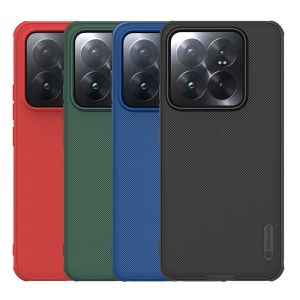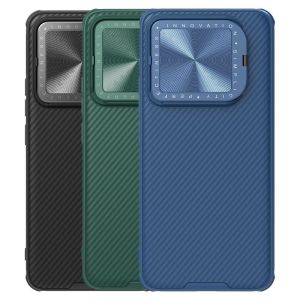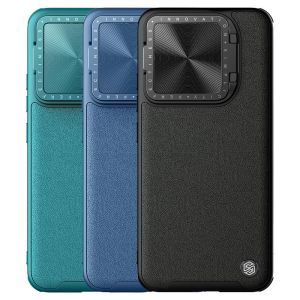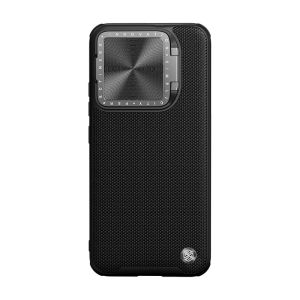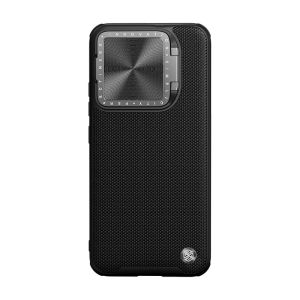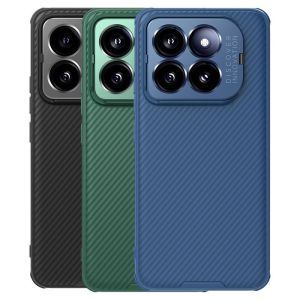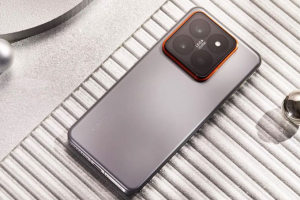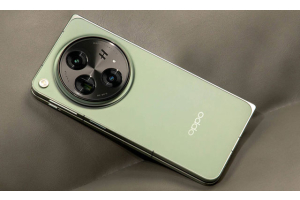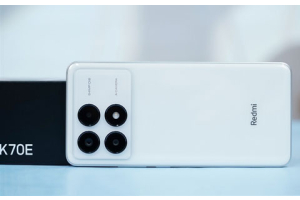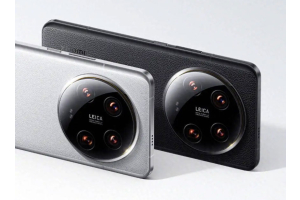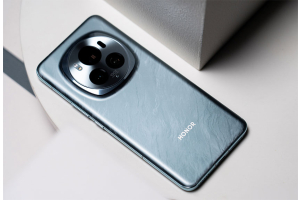Xiaomi 14 Pro: Features, Performance, and Imaging | Snapdragon 8 Gen3
1.Introduction: Four Exclusive Features of the Most Anticipated Xiaomi Digital Flagship, Xiaomi 14 Pro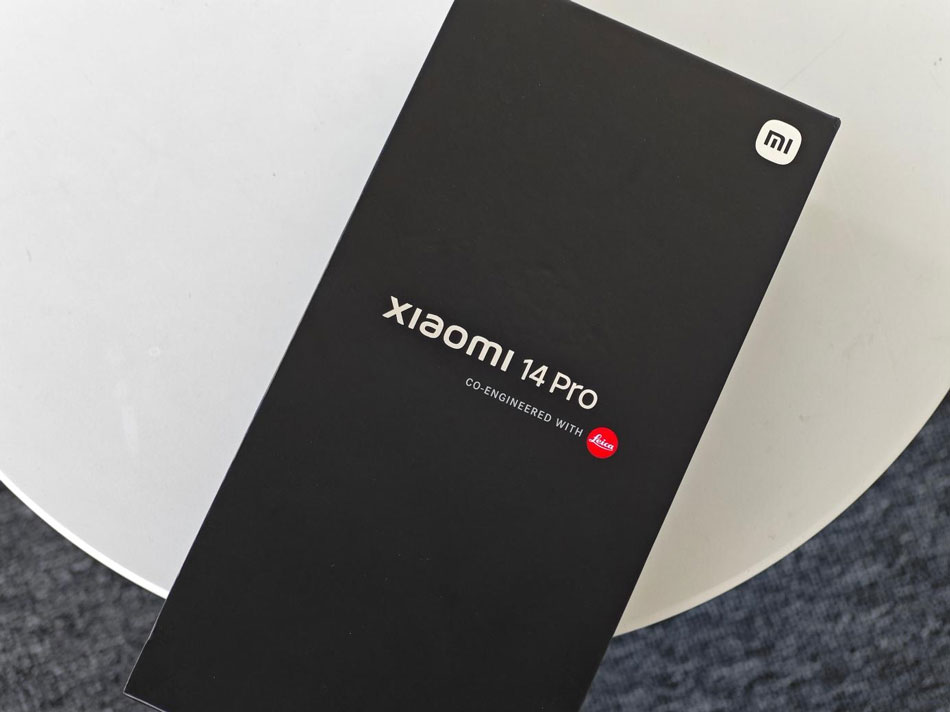
Without a doubt, the Xiaomi 14 series is the most anticipated generation of smartphones among the recent Xiaomi digital flagships! It debuts with the self-developed Surging OS operating system, and all models come standard with the Leica Summilux lens, claimed to be the most perfect lens in the mobile field, and it's the first Android phone to feature the Snapdragon 8 Gen3. Just these three points are enough to establish the historical status of the Xiaomi 14 series. It is also Xiaomi's most mature work after three years of high-end exploration. It can be regarded as the true flagship of Xiaomi's high-end strategy. This time, the Xiaomi 14 series debuts with two models, Xiaomi 14 and Xiaomi 14 Pro, one small (6.36 inches) and one large (6.73 inches). Lei Jun once said that in the naming system of Xiaomi's digital flagships, the standard version and the Pro version are not the previous "medium cup" and "large cup" relationship. Instead, they are designed with the idea of "beyond the large cup," creating different styles and excelling in their own fields. The dual success of Xiaomi 13 and 13 Pro also proves that small-sized straight-screen flagships and large-sized curved-screen flagships can coexist harmoniously and jointly win the market. The Xiaomi 14 series continues the design concept of the Xiaomi 13 series, with Xiaomi 14 focusing on the small-screen flagship market, pushing the narrow-border straight screen and lightweight feel to the extreme while challenging the performance ceiling of small screens; Xiaomi 14 Pro adopts a full-size deep-curved screen for the first time, integrating Xiaomi's current innovative technology into one.
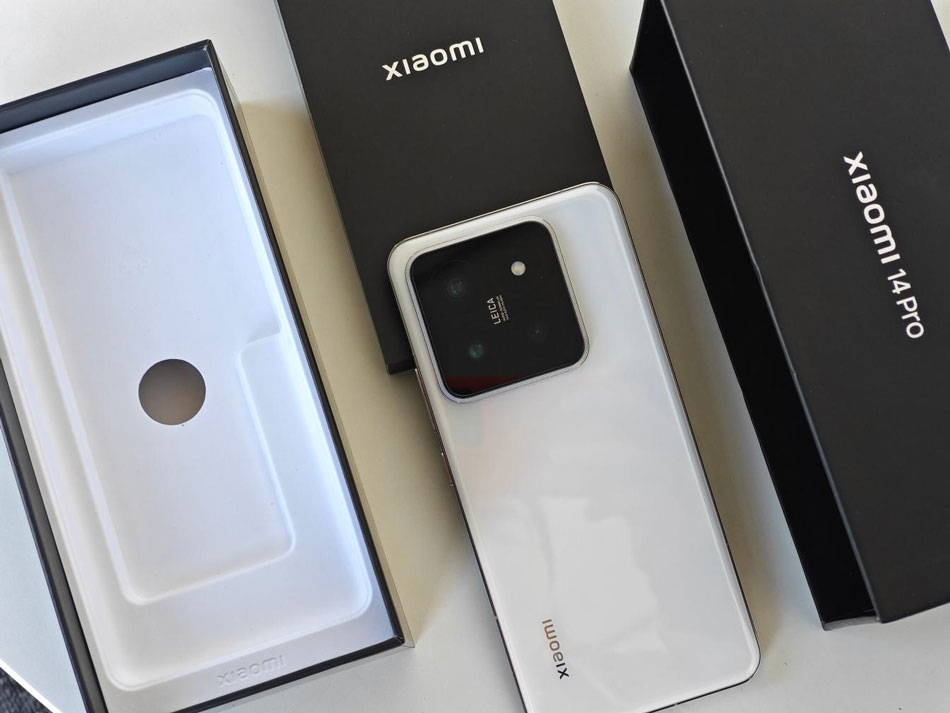
Xiaomi 14 Pro debuts with the third-generation Snapdragon 8 mobile platform, featuring a new Cortex-X4+A720+A520 core architecture and Adreno 750 GPU, boosting the CPU peak performance by 30% while reducing power consumption by 34%, and increasing GPU peak performance by 35% while reducing power consumption by 38%. In terms of the screen, Xiaomi 14 Pro and Huaxing Optoelectronics have jointly customized a new generation of C8 luminescent materials. The peak brightness of the screen exceeds an astonishing 3000nit, reaching an industry-leading level. Meanwhile, this screen also supports 12-bit color depth, LTPO infinitely variable refresh rate, and 2K resolution. In terms of imaging, Xiaomi 14 Pro has customized a brand-new photosensitive element in collaboration with Hawkeye Technology, named "Optical Hunter 900" by Xiaomi. This CMOS has a 1/1.31-inch photosensitive unit, bringing the industry's most advanced single-frame high dynamic range capability. Combined with the Leica Summilux lens and a 1024-level variable aperture, it heralds a new era of mobile optics. Compared to Xiaomi 14, it has four exclusive features: exclusive Xiaomi-developed Dragon Crystal Glass with 10 times the drop resistance; exclusive stepless variable aperture from f/1.42 to f/4.0 and 5cm super macro; exclusive two Surging P2 fast charging chips; exclusive Raytalk Technology ESA1016 ultra-wideband X-axis linear motor.
In comparison to Xiaomi 14, it also has the following differences: Xiaomi 14 Pro's screen adopts a full-size deep-curved screen, which not only provides a straight screen visual experience but also a curved screen feel, and is less prone to accidental touches. Furthermore, with a high-frequency PWM dimming of 1920Hz, the eye protection ability of Xiaomi 14 Pro is stronger than that of Xiaomi 14 when the phone brightness is below 80nit at night. Although all models of Xiaomi 14 series come with USB 3.2 transfer interface, there is a difference in transfer rate. The standard version supports a maximum transfer speed of 5Gbps, while the 14 Pro is twice that of the standard version, reaching a transfer speed of 10Gbps. There are also differences in charging. Xiaomi 14 supports up to 90W fast charging with a built-in Surging P2 charging chip, while Xiaomi 14 Pro's charging power is increased to 120W, supported by two Surging P2 charging chips, enabling single-cell over 100W fast charging capability. There are also slight differences in speaker parts. Although both have dual speakers, Xiaomi 14 Pro features symmetrical stereo dual speakers, while Xiaomi 14 uses earpiece-type dual speakers. The former's sound quality and stereo feeling are significantly stronger than the latter's. Of course, there are also some subtle differences, such as body thickness, overall weight, battery capacity, secondary camera specifications, and laser autofocus sensors.
2.Appearance: Full-size Deep-curved Screen, Straight Screen Visual Sensation, Curved Screen Feel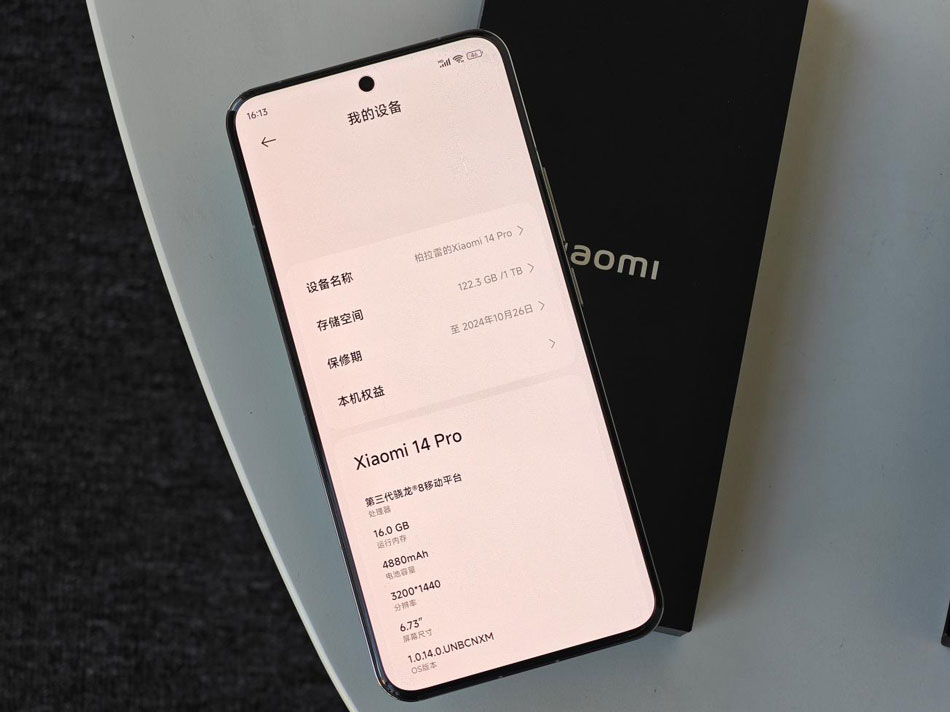
The packaging of Xiaomi 14 Pro continues the minimalist design style of the previous generation, with the product model and the logo of Xiaomi's depth imaging partner "Leica" printed in the center, and the Xiaomi logo printed in the upper right corner. The packaging is all black, highlighting the dignity and elegance of Xiaomi phones. The 14 Pro is equipped with a 6.73-inch OLED screen provided by Huaxing Optoelectronics, using C8 luminescent material, with a peak brightness of up to an industry-leading 3000nit. After professional color calibration, it solves the problem of yellowish OLED screens. LTPO substrate endows Xiaomi 14 Pro with the ability of infinite variable refresh rate, truly achieving a dynamic adaptive refresh rate of 1~120Hz, and supports native 12-bit color depth, displaying up to 680 billion colors, making the color transition of the picture more realistic. Xiaomi 14 Pro is covered with Xiaomi's self-developed Dragon Crystal Glass on the surface, adding lithium oxide, aluminum oxide, hafnium oxide, sodium oxide, silicon dioxide, and phosphorus pentoxide to the raw materials, subjected to heat treatment above 800 degrees Celsius, and strengthened through dual ion exchange technology, ultimately forming a hardness far exceeding glass. Compared to Corning GG V glass, its drop resistance is increased by 10 times, and its scratch resistance is increased by 1.32 times.
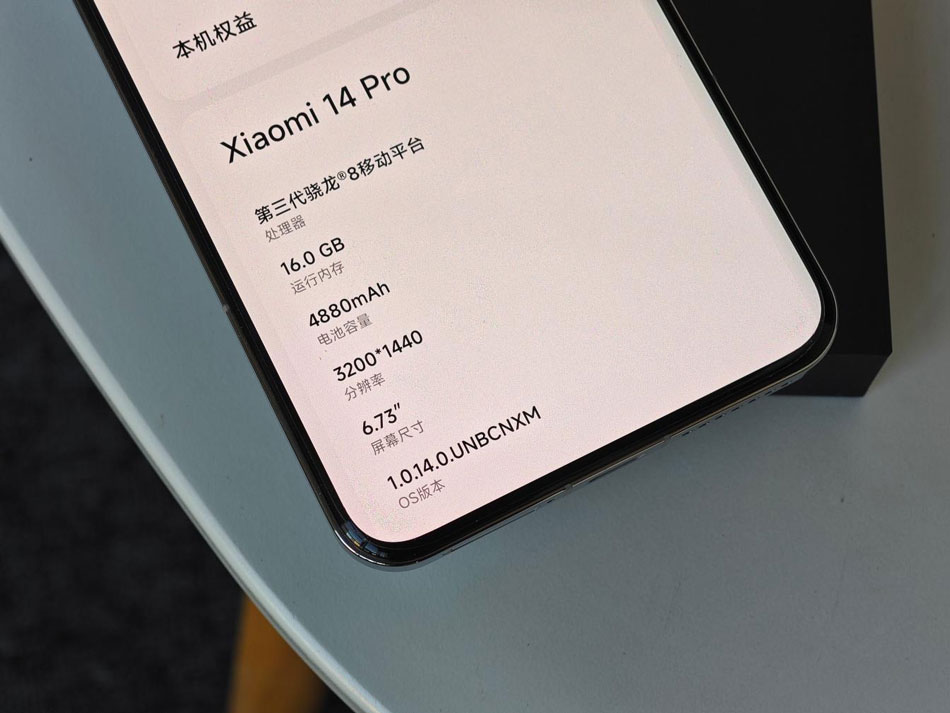
This time, Xiaomi has changed the design of the previous generation's double-curved screen and adopted a full-size deep-curved four-curved screen. The four corners and four sides are slightly curved with the same curvature, providing both a straight-screen visual sensation and a curved-screen feel. Secondly, combined with FIAA wiring technology, Xiaomi 14 Pro presents ultra-narrow visual effects on all four sides. The right side of the phone has power and volume buttons. Xiaomi 14 Pro comes in a white version, with a 2.5D high-gloss glass on the back giving the phone a warm and jade-like texture. Its frame adopts PVD physical vapor deposition technology, making it the industry's first high-gloss craftsmanship based on aluminum alloy, presenting a mirror-like exquisite appearance. The three-camera module on the back of the phone is located in the upper left corner, covered with a large square glass, with a Leica logo printed vertically in the middle, a dual LED monochrome temperature flash below the upper right corner, and a laser autofocus sensor below it. There is no infrared emitter opening at the top of the phone, but Xiaomi hides the infrared emitter inside the phone. On the right side of the flash, that is, 14 Pro can still use infrared to control home appliances, but the sensor is not external. It needs to be used facing the back of the appliance and adjusted to the appropriate angle to control the home appliance. The advantage of this design is that the top of the phone is cleaner. Xiaomi 14 Pro continues the design of symmetrical stereo dual speakers, with independent speaker openings at the top and bottom. In addition to the phone body, the packaging also includes a black silicone phone case, 120W fast charging kit (A-C data cable), user manual, and SIM card pin.
3.Imaging: Leica Large Sensor Group, Tolerance Beyond One Inch, Stepless Variable Aperture Brings New Choices for Users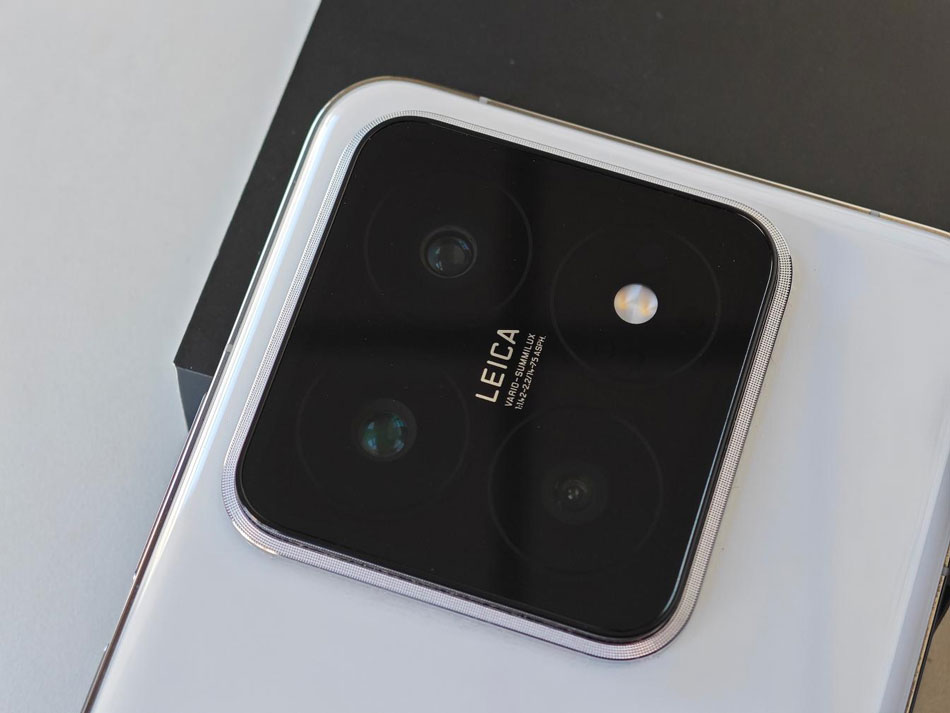
Xiaomi 14 Pro has three rear camera lenses, with the main camera using the "Optical Hunter 900" large sensor (OV50H) jointly developed with Hawkeye Technology, which has a 1/1.31-inch photosensitive unit and supports stepless variable aperture from F1.42 to F4.0 and Hyper OIS optical image stabilization. The telephoto lens has a 3.2x optical zoom, equivalent to a 75mm focal length (67mm for long focus), and the sensor uses Samsung S5KJN1, with a resolution of 50 million pixels. The CMOS of the ultra-wide-angle lens is the same as that of the telephoto lens, with an equivalent focal length of 14mm and support for 5cm macro shooting.
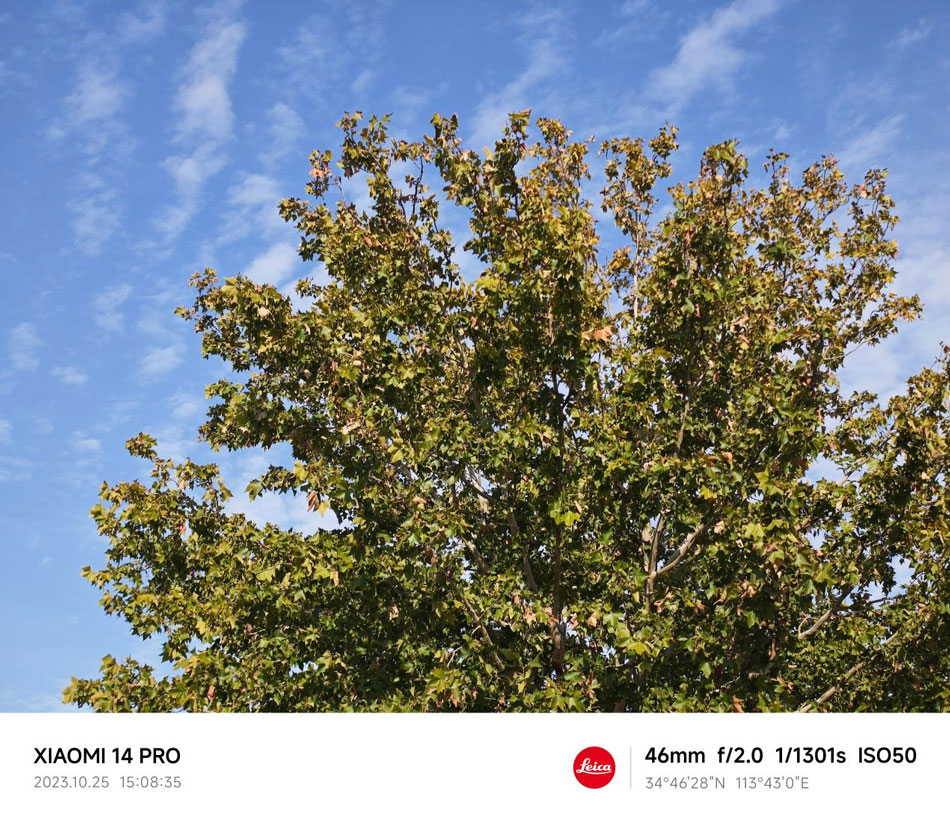
In daytime sample photos, with the help of a larger aperture, Xiaomi 14 Pro can capture more details and light information. In scenes with light and shadow, the highlights are brighter and the shadows are darker. Even if you are not good at taking photos, using the lenses of Xiaomi 14 Pro in various scenes can still produce clear and sharp photos, presenting a natural and realistic texture whether shooting scenery, people, or everyday objects. When the phone's camera interface is switched to professional mode, you can freely control the aperture value, with a total of 1024 levels of adjustment from f/1.42 to f/4.0. By changing the aperture, you can adjust the background blur effect of the sample photo. It can be seen from the actual sample photos that as the aperture gradually decreases, the background blur around the flowers and plants gradually diminishes, and the smaller the aperture value, the easier it is to highlight the subject of the photo. However, it should be noted that the automatic aperture of Xiaomi 14 Pro can only be manually adjusted in the default camera interface, and it can be adjusted steplessly when recording videos in movie mode.
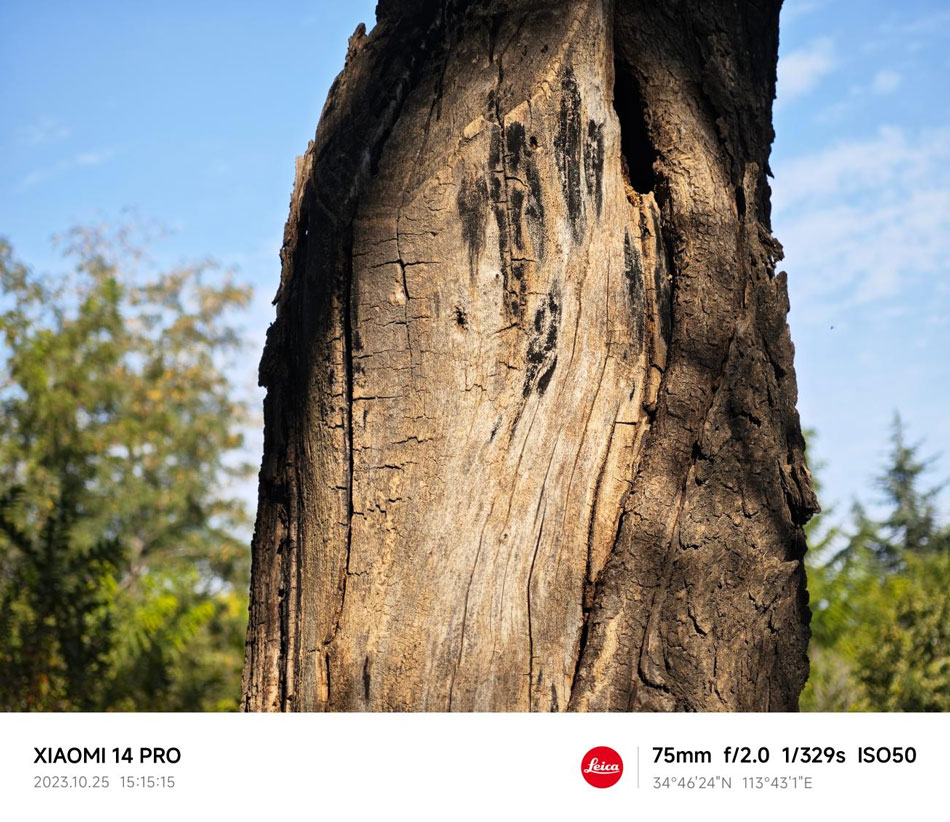
The 3.2x telephoto lens, tested to be able to call the telephoto lens with a 2.9x zoom, in a sufficiently bright environment, with the advantage of 50 million high pixels and the computational photography capability, even when the picture is enlarged to 5x or 10x, the details of the picture are still clear. Moreover, the picture taken by the telephoto lens is very clean overall, and there is no widespread whitening phenomenon. The colors remain vibrant, and compared to the main lens, there is no color difference caused by the difference in photosensitive units, and there is no distortion in the picture. The imaging is still very natural. Under the ultra-wide-angle lens, Xiaomi 14 Pro benefits from the professional ADL coating, which directly eliminates various optical defects when shooting high-light or objects, making the picture look clean, and even able to observe the structure inside the light carefully. Apple took 7 years to solve part of the glare problem. With the help of the large sensor and Xiaomi's imaging brainpower, as well as the powerful ISP of the third-generation Snapdragon 8 mobile platform, in night mode, you can almost take pictures quickly without waiting.
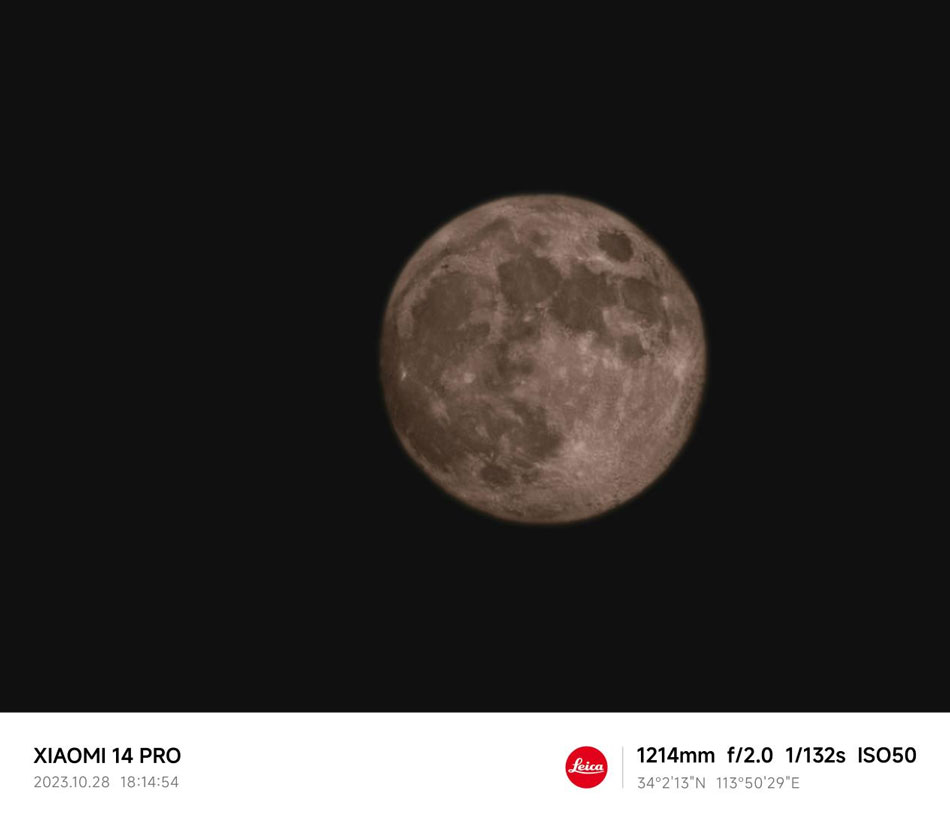
4.Performance and Gaming: Third-Generation Snapdragon 8, Antutu Score Breaks 2.11 Million, Genshin Impact Frame Rate Stable as a Straight Line
The Xiaomi 14 series globally debuts the third-generation Snapdragon 8 mobile platform from Qualcomm, introducing a new Cortex-X4+Cortex-A720+Cortex-A520 big, medium, and small core architecture design. It adopts a unique "1+3+2+2" four-cluster eight-core architecture, manufactured using TSMC's 4nm process technology, and employs ARM's new generation IP, fully migrating to the 64-bit instruction set. Theoretically, CPU peak performance has increased by 30%, with a 34% reduction in power consumption. The new Adreno 750 GPU, with a 20% increase in core size compared to the Adreno 740, supports hardware ray tracing and Mesh Shading. Theoretically, GPU peak performance has increased by 35%, with a 43% reduction in power consumption. Additionally, the Xiaomi 14 series comes standard with 4×16bit 16GB LPDDR5X 8533Mbps memory and supports up to 1TB UFS 4.0 flash storage, coupled with FBO storage renewal and Ultra Space storage expansion technology, significantly improving storage performance and durability.
Firstly, in the latest version of Antutu V10 comprehensive performance test, the total score soared to 2.119 million+, which is about 550,000 points higher than the standard version of the Snapdragon 8 Gen2 carried by the Xiaomi 13 Pro, with an overall performance increase of about 35.3%. Among them, the CPU score is over 456,000, representing an approximate 17.8% performance increase, while the GPU score is close to 900,000, indicating an approximately 47.7% performance increase. It seems that the third-generation Snapdragon 8 has made significant progress in graphics performance. Moving on to CPU single-core performance, the GeekBench6 single-core score is 2186, and the multi-core score breaks through the 7000 mark, reaching 7029, representing a 7.4% increase in single-core performance and a remarkable 26% increase in multi-core performance compared to the second-generation Snapdragon 8, thanks to the new three-cluster architecture, making the multi-core performance of the third-generation Snapdragon 8 directly comparable to Apple's A17 Pro chip. In GPU single-item testing, we used six projects from GFXBench, including 1080P Aztec Ruins OpenGL, Aztec Ruins Vulkan, Car Chase, Manhattan 3.1, Manhattan, and T-Rex, with scores of 187FPS, 218FPS, 154FPS, 258FPS, 358FPS, and 516FPS respectively. Compared to the second-generation Snapdragon 8, the advantage in graphics rendering capability is also quite evident, with an increase of up to 21.1% and a minimum of 7.7%.
Benchmark scores only represent theoretical performance; the actual performance of games can explain everything. Next, we selected three representative mainstream mobile games with low, medium, and high loads, namely "King of Glory," "Peace Elite," and "Genshin Impact." Tested in an indoor office environment at 27 degrees Celsius, we prioritized frame rate and recorded the frame rate, power consumption, efficiency ratio, and body temperature during gameplay.
Firstly, we conducted a test on the low-load "King of Glory" mobile game. After a nearly 15-minute team battle, the average fluctuation was only 0.1, and the frame rate remained stable on a straight line throughout the entire game, with virtually no visible fluctuations, ensuring a very stable gaming experience. In terms of power consumption, the average was around 3.14W, with a frame power consumption of 26.2mW, about 0.2W lower than the second-generation Snapdragon 8. In terms of temperature, the highest temperature on the front of the device reached 38.7 degrees Celsius, located at the bottom, indicating that Xiaomi's heat dissipation module is quite effective in quickly dissipating heat across the entire panel. The highest temperature on the back of the device was 39.2 degrees Celsius, near the SoC area, which may feel slightly warm when holding the device, but it does not affect gameplay.
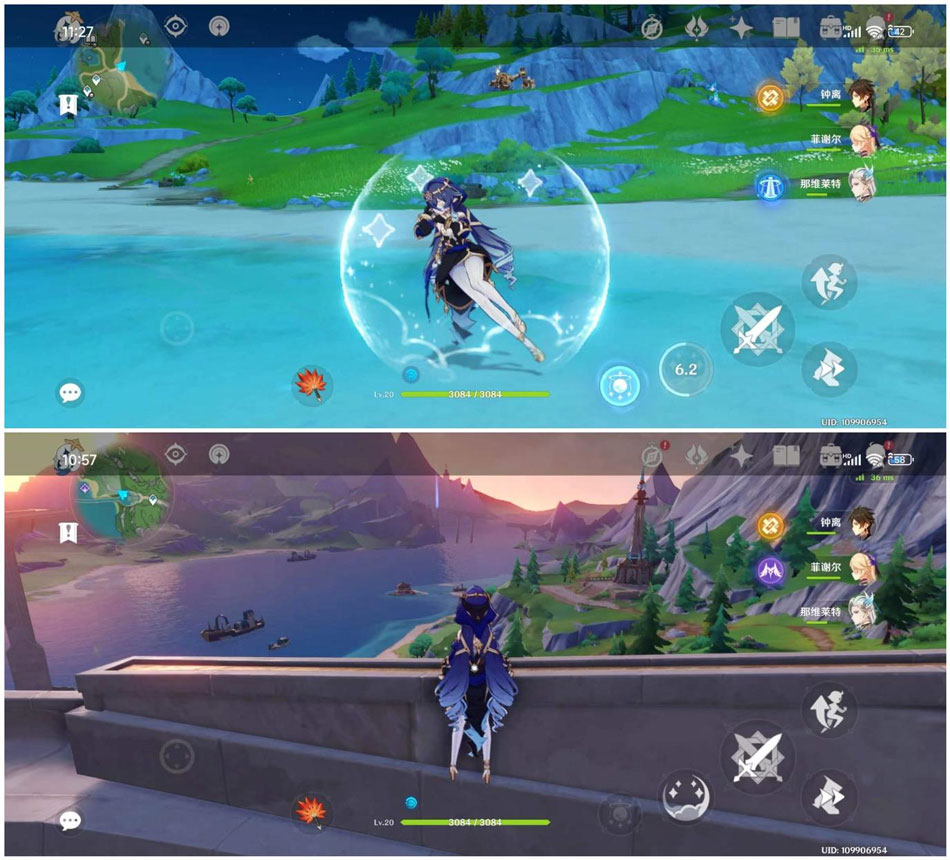
Next, we tested the medium-load "Peace Elite" mobile game. Under the smooth graphics quality and 90 FPS mode, there were slightly more frequent fluctuations, reaching 0.4 FPS, but the overall gameplay remained very stable, with an average frame rate of 89.7 FPS. The average power consumption was around 3.26W, nearly 0.3W lower than the second-generation Snapdragon 8, with a frame power consumption of 36.3mW. In terms of temperature, the highest temperature on the front was 39.8 degrees Celsius, and on the back was 39.6 degrees Celsius.
Finally, we tested the high-load "hardware killer" Genshin Impact mobile game. Running at the highest graphics quality and 60 FPS mode, the game maintained an average frame rate of 59.5 FPS throughout the entire 15-minute test, with a minimal fluctuation of 1.1 FPS. The game ran smoothly without significant frame drops, maintaining an average resolution of 864P. The average power consumption was 4.59W, with a frame power consumption of 77.2FPS. Compared to previous Snapdragon 8 Gen2 models, which typically maintained power consumption around 5W or higher, the third-generation Snapdragon 8 significantly reduced power consumption by nearly 0.5W. In terms of temperature, the highest temperature on the front of the device reached 41.8 degrees Celsius, and on the back was 42.7 degrees Celsius, with the grip area slightly cooler. The adoption of a ring-shaped heat pump heat dissipation module ensures that the Xiaomi 14 Pro remains cool during intense gaming sessions, providing a smooth gaming experience.
5. Charging and Battery Life: Full Charge in 25 Minutes, Nearly 10 Hours of Battery Life
The Xiaomi 14 Pro further increases the battery capacity to 4880mAh, equipped with a single-cell high-energy battery. It integrates two Surging P2 charging chips with higher conversion efficiency, driving the single-cell 120W Surging wired fast charging. With the deployment of the Surging G1 battery management chip, it monitors charging in real-time, estimates the available duration corresponding to the remaining battery level, and optimizes discharge and charging strategies to maintain battery health. Additionally, the Xiaomi 14 Pro supports 50W wireless charging and wireless reverse charging.
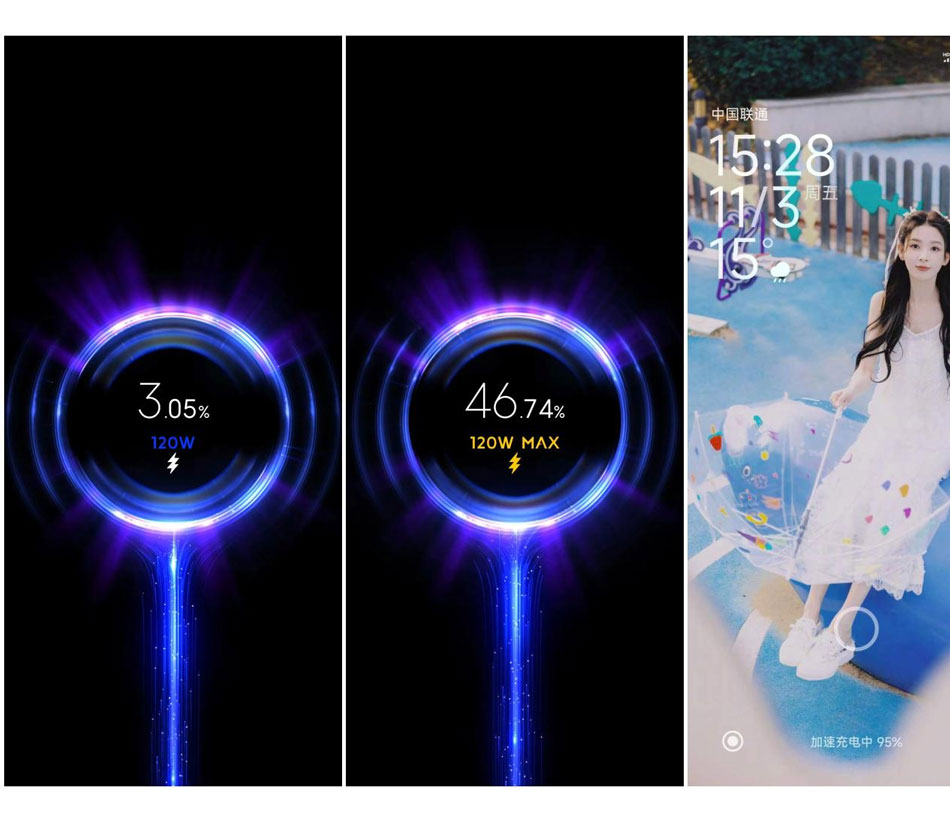
We conducted charging and battery life tests on the Xiaomi 14 Pro. In the charging test, starting from 1%, the device reached 29% in 5 minutes, over half in 10 minutes at 53%, 87% in 20 minutes, and fully charged in just 25 minutes. With this charging speed, the device can reach over half the battery level between morning routines, ensuring it lasts throughout most of the day.
For battery life testing, we used the professional battery testing tool—Battery Dog, developed by Fast Technology. We selected the extreme battery endurance test, including CPU high pressure, CPU multi-threading, AI recognition, picture browsing, video playback, and web browsing. These tests simulate user scenarios, replicating real-world loads to closely approximate actual power consumption. With the resolution set to 1080P, the device lasted 7 hours, 45 minutes, and 35 seconds from 100% to 20% battery, resulting in nearly 10 hours of continuous usage when fully charged. This battery life performance can meet the usage duration of an average user for a day.
6. Summary: Xiaomi Challenges the Most Mature Flagship
If the release of the Xiaomi 10 series dual-flagship in 2020 marked the beginning of Xiaomi's foray into high-end flagship smartphones, then over the following three years, the 11, 12, and 13 series, including the regular, large, and super-large flagship models, served as the cornerstone consolidating Xiaomi's position in the high-end smartphone market and an important milestone in leading the Xiaomi digital flagship series into the high-end segment. The Xiaomi 14 series is the result of Xiaomi's significant efforts and innovative thinking in the high-end smartphone product line, representing the most mature and stable product in Xiaomi's high-end smartphone journey to date.
The global debut of the third-generation Snapdragon 8 mobile platform, with its new architecture, brings the CPU multi-core performance close to that of Apple's A17 Pro chip, while the Adreno 750 GPU significantly enhances the device's graphics processing capabilities. In real-world testing with Genshin Impact mobile game, the average frame rate stabilizes at 59.5FPS with power consumption below 5W, placing it in the same league as the A17 Pro. This demonstrates the commendable strength of the third-generation Snapdragon 8 mobile platform. Furthermore, in terms of imaging, the combination of the jointly developed Optical Hunter 900 CMOS and the perfect Leica Summilux lens brings astonishing high dynamic range and 14-bit color depth output, capturing unprecedented light and shadow details. The new form of stepless variable physical aperture provides users with more choices and possibilities, enhancing the camera's performance in capturing scenes near and far. In terms of display, the joint development of the C8 luminescent material with Huaxing Optoelectronics has increased screen brightness by 30% compared to Samsung's E6 substrate, and with professional screen calibration referencing the CIE170-2:2015 color space, the issue of OLED D65 yellowishness has been resolved, surpassing Samsung's OLED screens in real-world quality, setting a new standard. The self-developed Hyper OS operating system has completely broken down the barriers between hardware devices, unifying interconnection protocols and dynamically creating self-networks across devices, enabling all devices to connect under a unified protocol and communicate in real-time. This historic breakthrough in Xiaomi's interconnectedness lays the foundation for Xiaomi's future in-car connectivity and universal connectivity.
In the development of the consumer electronics industry, competition has always been fierce. Regardless of the stage, globally renowned tech brands cannot do without the success of high-end products, which often stem from bold innovation. Xiaomi's bold attempts over the past three years, continuous investment in research and development, and ongoing brand partnerships have culminated in the most meaningful flagship smartphone in Xiaomi's history—the Xiaomi 14 Pro. With its new Hyper OS, new imaging brand, and self-developed glass, coupled with the top-tier third-generation Snapdragon 8 mobile platform, Xiaomi leverages its R&D experience and the spirit of exploration it has upheld for over a decade to show the world that the high-end process of the Xiaomi brand has yielded remarkable results.
Looking at it now, Xiaomi has been able to maintain a leading position in the fiercely competitive market, continuously driving the brand towards high-end, which proves that Lei Jun's decision three years ago was absolutely correct.

